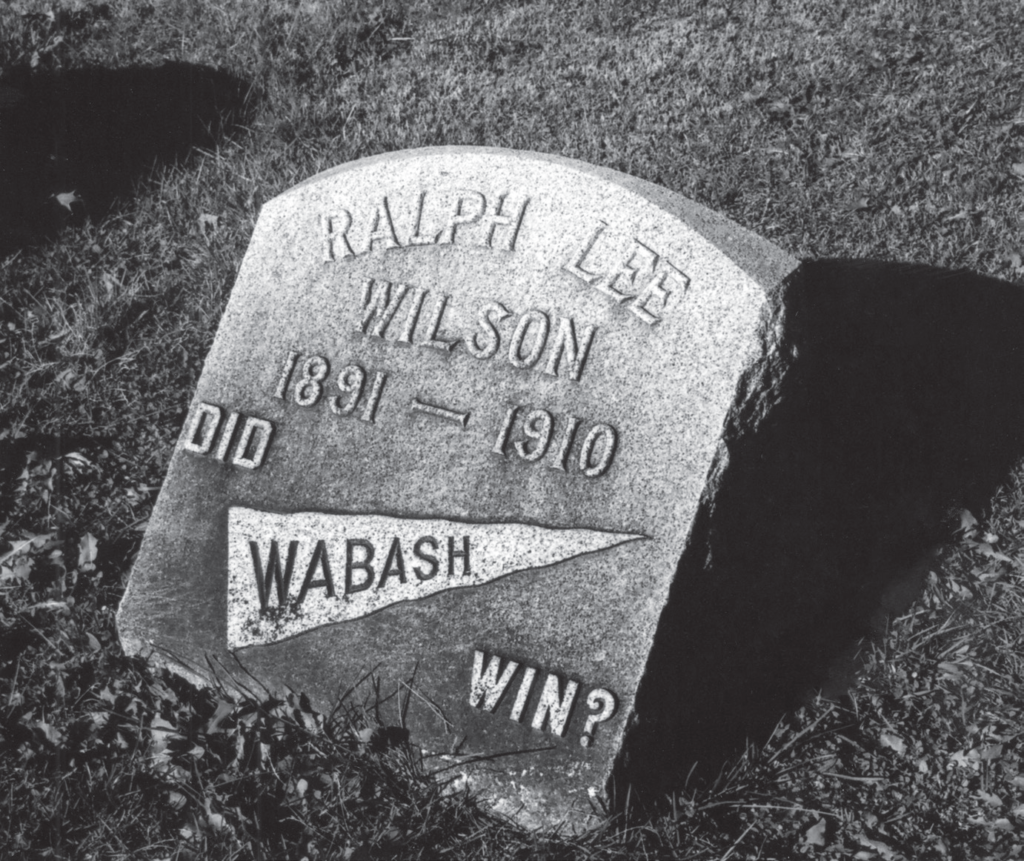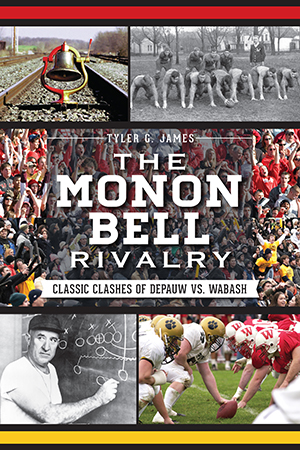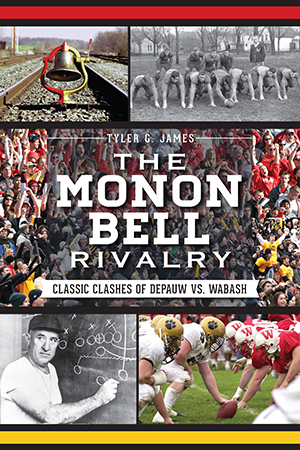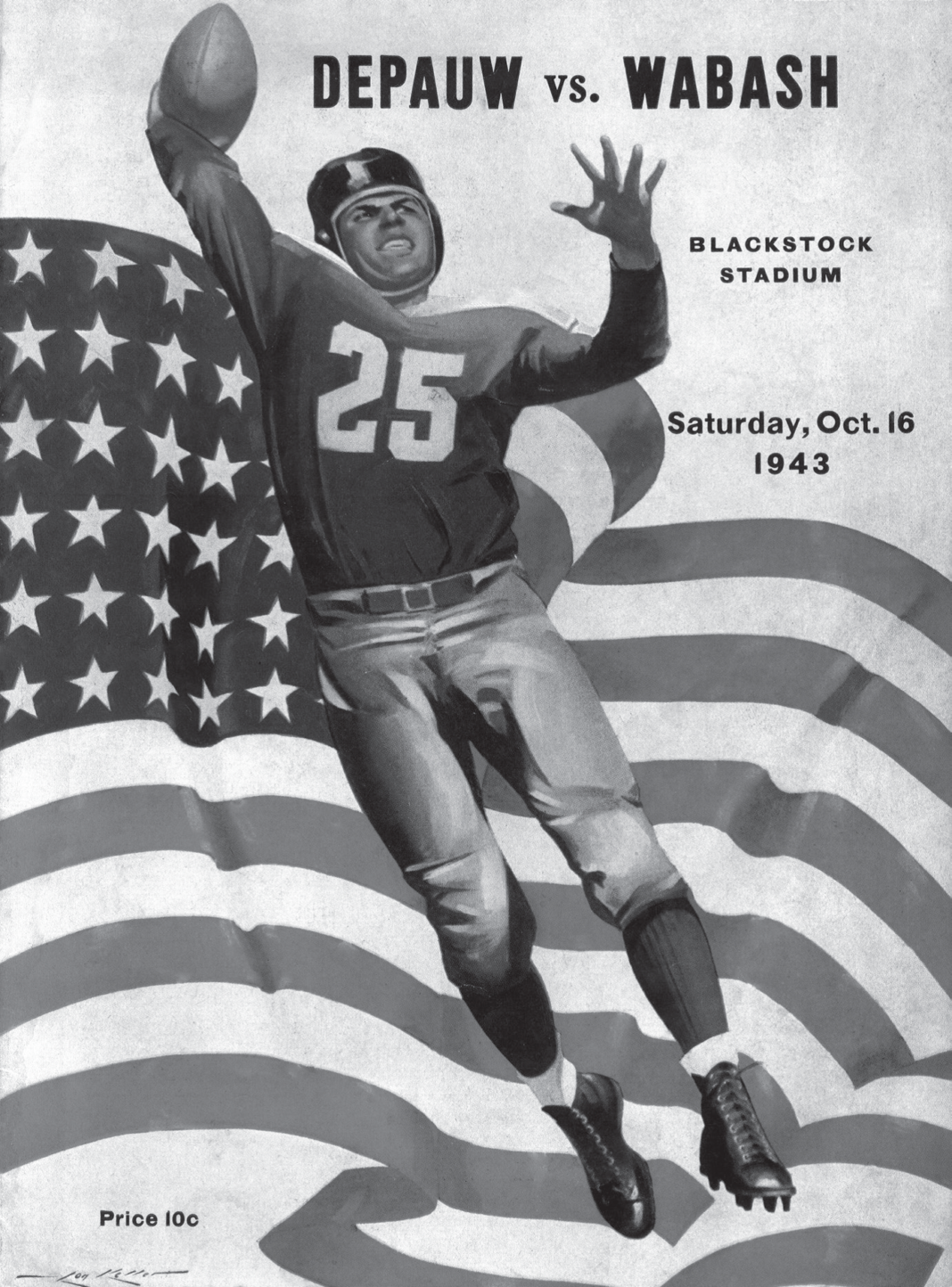
Anything involving DePauw and Wabash will be competitive—even their history.
They can’t even agree on what to call the game. For DePauw, located in Greencastle, it’s Monon. For Wabash, located in Crawfordsville, it’s The Bell Game. Whatever the name, the rivalry game between the two colleges, which will meet for the 126th time on November 16, holds something special.
The same is true of its history—and even that is competitive. Both schools believe their squad was the first to play a football game. On October 25, 1884, the Wabash Little Giants played Butler University’s football team at Indianapolis Baseball Park, in what the school claims was the first intercollegiate football game played in Indiana. DePauw records show a game of its own in the spring of 1884, with the Tigers also taking on Butler.
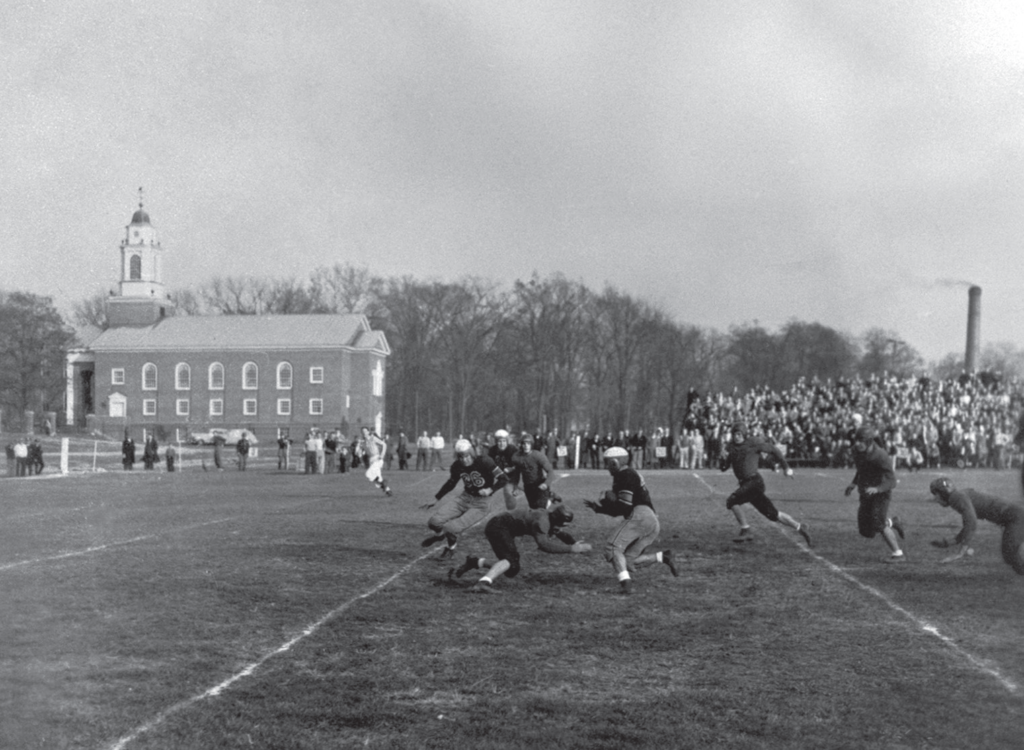
Regardless of who played the first game, DePauw and Wabash squared off as opponents for the first time in 1890.
Separated by twenty-eight miles, the two schools became instant rivals. DePauw won the first game 34–5, and the two teams played every year for the next six seasons.
Eventually, the Monon Railroad, which in part connected the two Indiana campuses in Greencastle and Crawfordsville, donated a three hundred-pound locomotive bell from one of its steam-engine trains to award to the winner of the annual football game between the two schools.
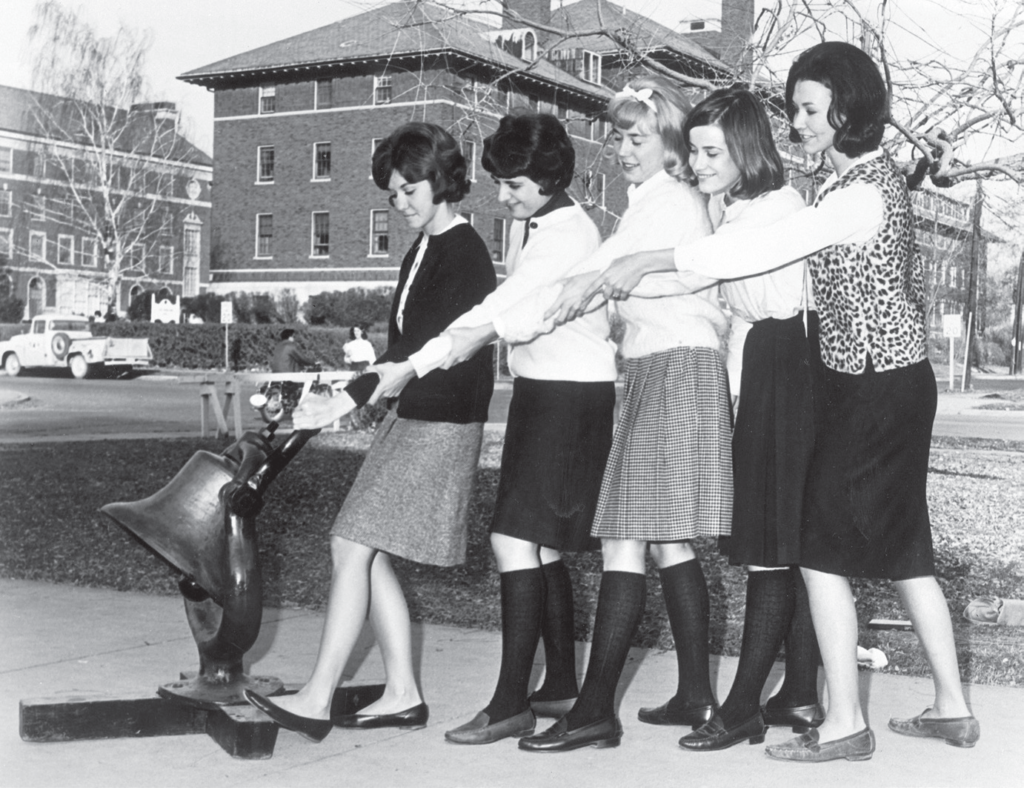
Before that, though, the rivalry took a few breaks. Sometimes the reasons for a hiatus were far bigger than sports. In 1903, the DePauw team refused to leave the locker room upon hearing that the Wabash lineup included African American player Sam Gordon. Wabash legend says Lew Wallace, a former Civil War general who also wrote Ben Hur, played a role in coaxing the DePauw team to play. Wabash won the game by a 14–0 score, but the teams didn’t play the following year because Wabash used another African American player, William Cantrell.
In 1910, the DePauw-Wabash rivalry was interrupted again. The Little Giants played four games to start the season, accumulating a 4–0 record and a 118–0 aggregate advantage. But in the fourth game, freshman Ralph “Sap” Wilson suffered a head injury. Tackling a St. Louis University ball carrier, Wilson took a knee to his skull. Hours after the game, Wilson died as the result of a skull fracture.
The rest of the 1910 season was cancelled, wiping out the game against the Greencastle foes.
The rivalry was renewed in 1911 and has remained an annual tradition in every year that’s followed.
Each of those games has been marked by the kind of passion that Wilson played with. His tombstone, in Crawfordsville’s Oak Hill cemetery, has itself become apart of Indiana football lore. On it, after his name and year of death, are Wilson’s final words: “Did Wabash win?”
